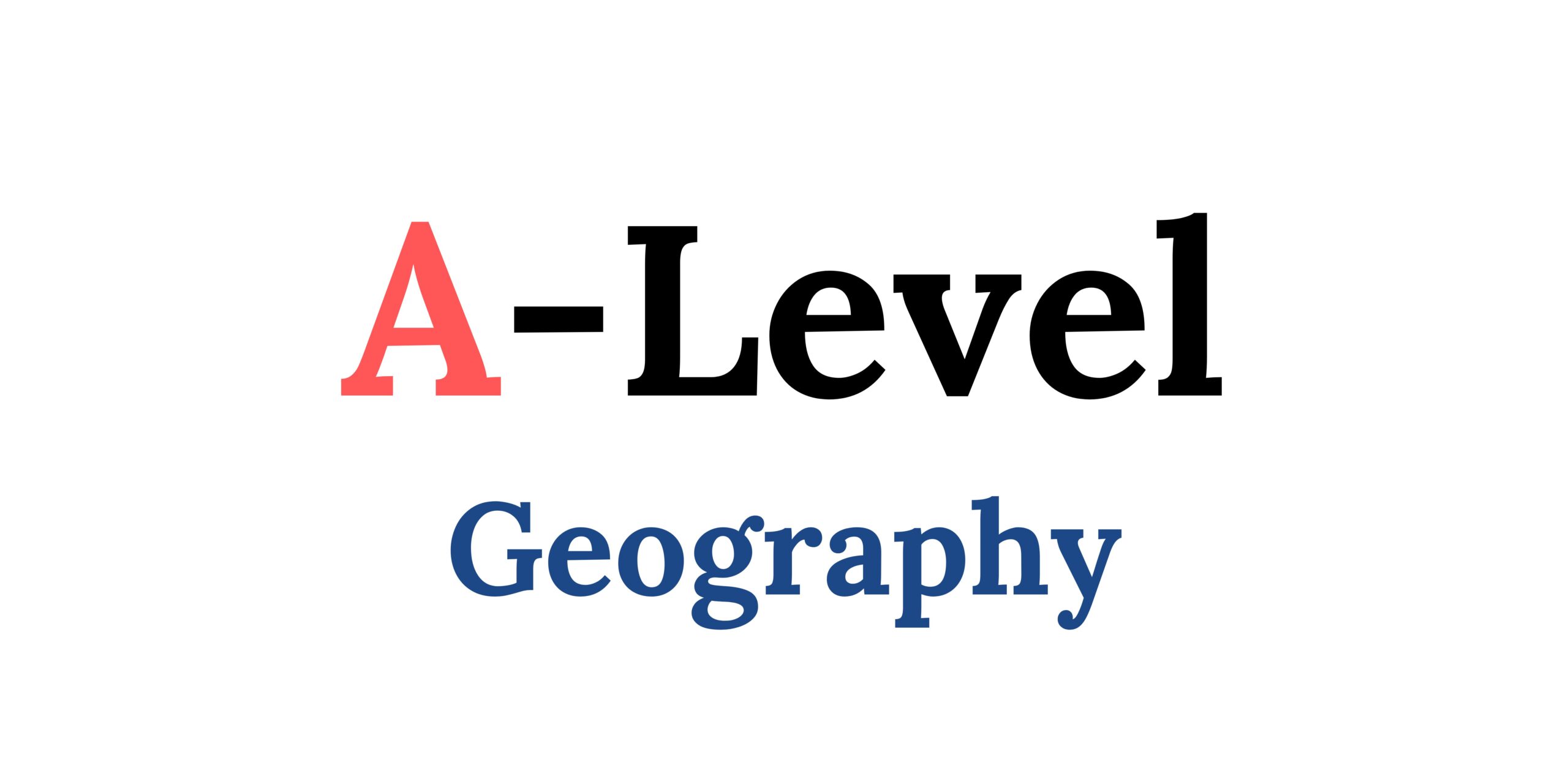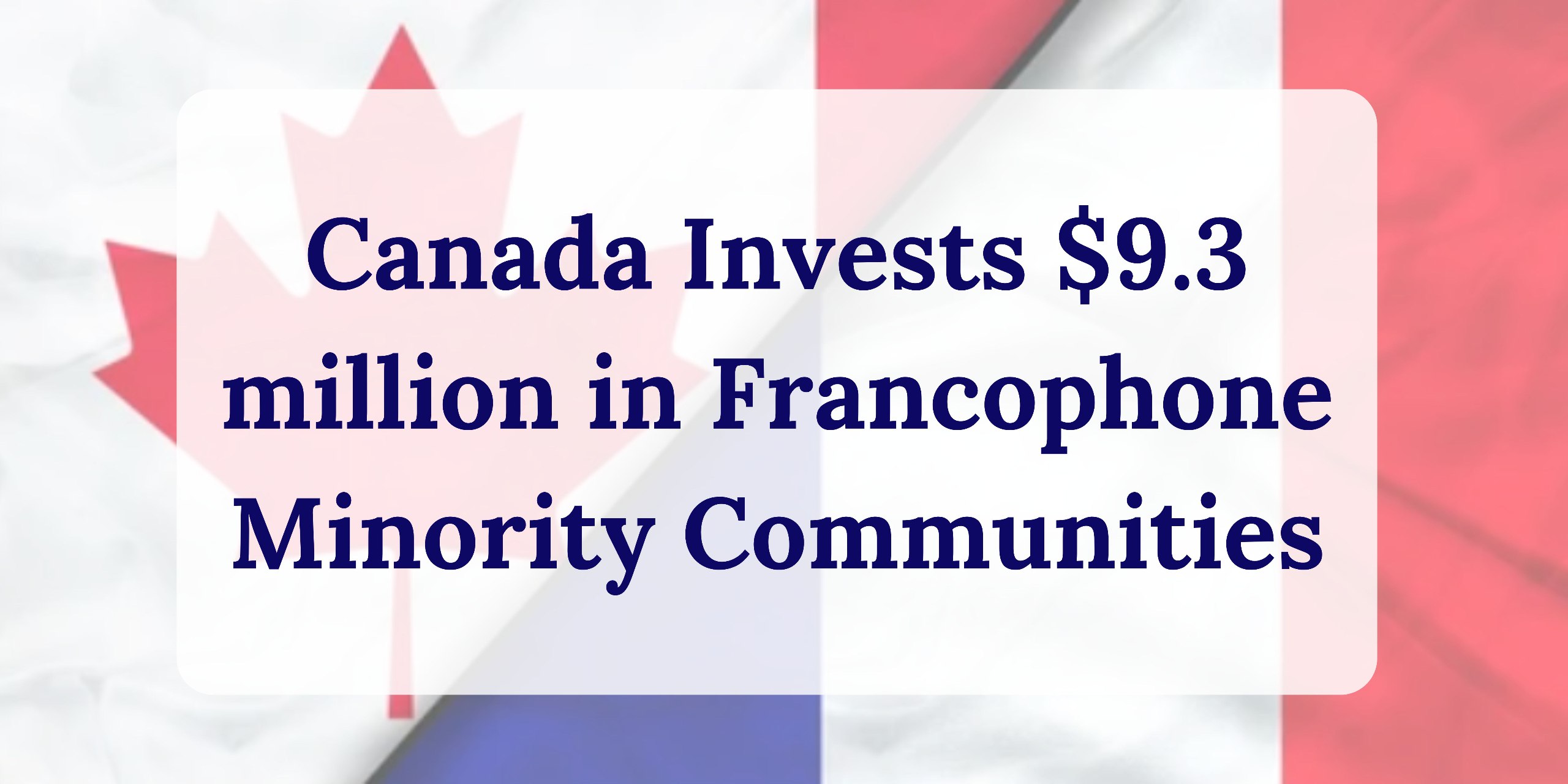
Overview of AQA A-level Geography qualifications
Subject content:
Want to learn more about Advanced Level Qualifications (A-Levels) and how they can shape your academic future? Click here to explore: A-Level Information.
1. Water and carbon cycles
| Syllabus component | Content |
|---|---|
| Water and carbon cycles as natural systems | • Systems in physical geography. • Concepts applied to water and carbon cycles. • Inputs, outputs, energy, stores/components, flows/transfers. • Positive/negative feedback. • Dynamic equilibrium. |
| The water cycle | • Global distribution and size of water stores (lithosphere, hydrosphere, cryosphere, atmosphere). • Processes driving changes in water stores (evaporation, condensation, cloud formation, precipitation, cryospheric processes). • Drainage basins as open systems (inputs/outputs, stores, flows, water balance). • Runoff variation and flood hydrograph. • Changes in the water cycle (natural variation, human impact). |
| The carbon cycle | • Global distribution and size of carbon stores (lithosphere, hydrosphere, cryosphere, biosphere, atmosphere). • Factors driving changes in carbon stores (flows/transfers at various scales, photosynthesis, respiration, decomposition, combustion, carbon sequestration, weathering). • Changes in the carbon cycle over time (natural variation, human impact). • Carbon budget and its impact on land, ocean, atmosphere, and global climate. |
| Water, carbon, climate and life on Earth | • Key role of carbon and water stores and cycles in supporting life and climate. • Relationship between the water cycle and carbon cycle in the atmosphere. • Role of feedbacks within and between cycles, link to climate change, and implications for life. • Human interventions in the carbon cycle. |
Quantitative and qualitative skills:
– Engage with quantitative and qualitative skills within the theme of water and carbon cycles;
– Understand simple mass balance and unit conversions;
– Analyze and present field data.
Case studies:
– A tropical rainforest to analyse water and carbon cycles, environmental change and human activities;
– Local river catchment to analyse key themes, field data and the impact of rainfall on water storage and transport in the drainage basin with implications for sustainable water supply and flooding.
2. Hot desert systems and landscapes
| Syllabus component | Content |
|---|---|
| Deserts as natural systems | • Apply systems concepts to desert landscapes: inputs, outputs, energy, stores, flows, feedback. • Study global distribution and characteristics of mid and low latitude deserts, including climate, soils, vegetation, and water balance. • Understand causes of aridity: atmospheric processes, pressure, winds, continentality, relief, cold ocean currents. |
| Systems and processes | • Energy sources in deserts: insolation, winds, runoff. • Sediment sources and budgets. • Key geomorphological processes: weathering, erosion, transportation, deposition. • Arid-specific weathering: thermal fracture, exfoliation, chemical weathering. • Wind effects: erosion, transportation, and deposition. • Water sources and episodic roles: exogenous, endoreic, ephemeral; sheet and flash flooding. |
| Arid landscape development in contrasting settings | • Landforms in Mid and Low Latitude Deserts: – Aeolian: deflation hollows, desert pavements, ventifacts, yardangs, zeugen, barchans, sief dunes; – Water-related: wadis, bahadas, pediments, playas, inselbergs. • Landform Development: How processes and time shape characteristic desert landscapes. |
| Desertification | • Historical Changes: Expansion of hot deserts in the last 10,000 years. • Causes: Climate change and human activities. • Impacts: On ecosystems, landscapes, and populations. • Future Projections: Climate change effects and possible outcomes for local populations. |
Quantitative and qualitative skills:
– Data manipulation and statistics;
– Observation and measurement;
– Mapping and field data application.
Case studies:
– “Hot Desert: Analysing key themes and field data from desert environments, including coastal dunes;
– Desertification: Examine a local area affected by desertification. Assess causes, impacts and implications for sustainable development.
3. Coastal systems and landscapes
| Syllabus component | Content |
|---|---|
| Coasts as natural systems | • Apply systems concepts to coastal landscapes, including inputs, outputs, energy, and feedback. • Understand how landforms combine to create distinctive coastal landscapes. |
| Systems and processes | • Energy sources: winds, waves (constructive/destructive), currents, tides; low vs. high energy coasts. • Sediment dynamics: sources, cells, budgets. • Geomorphological processes: weathering, erosion, transportation, deposition. • Coastal-specific processes: marine erosion (e.g., hydraulic action, abrasion), sediment transport (e.g., longshore drift), and sub-aerial weathering. |
| Coastal landscape development | • Study of various coastal landforms and processes, including erosion and deposition. • Estuarine environments like mudflats and salt marshes. • Sea level changes (eustatic, isostatic, tectonic) and their impacts. • Coastlines of emergence and submergence (raised beaches, rias, fjords). • Effects of recent and future climate changes on coasts. • The relationship between coastal processes, landforms, and time. |
| Coastal management | • Traditional methods for coastal flood and erosion risk include hard (e.g., sea walls) and soft engineering (e.g., beach nourishment). • Sustainable coastal zone and shoreline management strategies. |
Quantitative and qualitative skills: Students need skills in observation, measurement, geospatial mapping, and data analysis for landscape systems.
Case studies:
– Local coastal environments: Analyze coastal processes, landscape outcomes, and field data with a focus on sustainable management;
– Contrasting non-UK coastlines: Assess risks, opportunities, and human responses for resilience and adaptation.
4. Glacial systems and landscapes
| Syllabus component | Content |
|---|---|
| Glaciers as natural systems | • Apply systems concepts (inputs, outputs, energy, stores, flows) to glaciated landscapes. • Understand how landforms combine to create characteristic glaciated landscapes. |
| The nature and distribution of cold environments | • Global distribution and types: polar, alpine, glacial, periglacial. • Key physical characteristics: climate, soils, and vegetation interactions. • Historical impact of Pleistocene glaciations. |
| Systems and processes | • Glacial Systems: Glacial budgets, ablation, and accumulation patterns. • Glacier Types: Warm and cold-based glaciers, their characteristics and development. • Geomorphological processes: weathering, ice movement, erosion, fluvioglacial processes. • Periglacial features: Permafrost, active layer, mass movement. |
| Glaciated landscape development | • Glaciated Landscapes: Study various examples from within and beyond the UK. • Erosional Landforms: Corrie, arête, trough, valley, spur, roches moutonnées. • Depositional Landforms: Drumlins, erratics, moraines, till plains. • Fluvioglacial Landforms: Channels, kames, eskers, outwash plains. • Periglacial Landforms: Patterned ground, ice wedges, pingos, blockfields, solifluction. • Relationships: Process, time, and landforms in glaciated and periglacial environments. |
| Human impacts on cold environments | • Environmental Fragility: Understanding its impact on cold environments. • Human Impacts: Effects on cold environments over time and at various scales. • Climate Change: Current and potential future impacts. • Management: Present and future strategies for managing cold environments. |
Skills Required: Quantitative and qualitative skills for landscape systems.
Specific Skills: Observation, measurement, geospatial mapping, and data analysis.
Case studies:
– Analyze glacial processes and landscapes using field data;
– Explore challenges and opportunities in a foreign glaciated landscape, assessing human responses.
5. Hazards
| Syllabus component | Content |
|---|---|
| The concept of hazard in a geographical context | • Geophysical, atmospheric and hydrological hazards and their consequences. • Economic and cultural factors affecting the perception of hazards. • Fatalism, anticipation, adaptation, mitigation and risk sharing. • The Park Model and the Hazard Management Cycle. |
| Plate tectonics | • Earth Structure. • Plate Tectonics. • Plate Margins. • Landforms: Includes mountains, rift valleys, ridges, trenches, and volcanoes. • Magma Plumes: Linked to plate movements. |
| Volcanic hazards | • Volcanic hazards: Volcanic eruptions, lava flows, mudslides, pyroclastic deposits, ash, gases and tephra. • Relation to plate tectonics. • Hazard details. • Impacts: Environmental, social, economic and political. • Responses. |
| Seismic hazards | • Seismic hazards: Earthquakes, shock waves, tsunamis, liquefaction and landslides. • Relation to plate tectonics. • Details of hazards. • Impacts: Environmental, social, economic and political consequences. • Responses. |
| Storm hazards | • Storm Hazards: Causes and nature of tropical storms. • Hazards: High winds, storm surges, flooding, and landslides. • Characteristics: Distribution, magnitude, frequency, and predictability. • Impacts: Environmental, social, economic, and political effects. • Responses: Preparedness, mitigation, prevention, and adaptation. • Impacts and responses from two recent tropical storms in different regions. |
| Fires in nature | • Nature and conditions favoring intense wildfires. • Vegetation, fuel characteristics, climate, recent weather, fire behavior. • Causes: Natural and human. • Impacts: Environmental, social, economic, political. • Responses. • Case Study: Impact and responses from a recent wildfire. |
Multi-hazardous Environment Case Study (Beyond UK):
– Analyze hazards and associated risks (social, economic, environmental);
– Examine human responses (resilience, adaptation, mitigation, management).
Local Hazard Case Study:
– Analyze physical nature of the hazard;
– Examine community’s economic, social, and political response to the risk and impacts.
6. Ecosystems under stress
| Syllabus component | Content |
|---|---|
| Ecosystems and sustainability | • Biodiversity: Concept, trends, causes, rates, impacts of decline. • Ecosystems: Importance for human populations, relevance to population growth and economic development. • The role of humans in the development and sustainability of ecosystems. |
| Ecosystems and processes | • Ecosystems: Structure, energy flows, trophic levels, food chains, food webs. • Systems Concepts: Inputs, outputs, stores, energy/material transfers, biomass, net primary production. • Succession: Seral stages, climatic climax, sub-climax, plagioclimax. • Nutrient Cycling: Mineral cycles. • Terrestrial Ecosystems: Climate, vegetation, soil, topography interactions. • Ecosystem Responses: Changes in components or environmental controls. • Influences on Ecosystem Changes: Climate change, human exploitation. |
| Biomes | • Biomes: Concept and global distribution. • Tropical Rainforest & Savanna Grassland. • Ecological Responses: Climate, soil, moisture budget; flora and fauna adaptations. • Human Impact. • Development Issues: Population changes, economic development, agricultural extension/intensification, biodiversity, sustainability. |
| Ecosystems in the British Isles over time | • Succession and Climatic Climax: Lithoseres, hydroseres. • Temperate Deciduous Woodland: Climatic climax characteristics. • Human Impact: Effects on succession, example of plagioclimax (heather moorland). |
| Marine ecosystems | • Distribution and characteristics of coral reef ecosystems. • Environmental conditions for reef development. • Health and survival factors (natural and human impact). • Future prospects for coral reefs. |
| Local ecosystems | • Characteristics of a local ecosystem. • Ecological responses to climate, soil, and moisture. • Local factors in ecological development and change. • Impacts of change and management measures. • Conservation strategies. |
Regional Case Study: Analyze ecological change, its causes, community characteristics, and responses.
Local Ecosystem Case Study: Examine ecosystem properties, human impact, and sustainable development challenges and opportunities.
7. Global systems and global governance
| Syllabus component | Content |
|---|---|
| Globalisation | • Dimensions: Capital, labour, product, service, and information flows; global marketing; production and consumption patterns. • Factors: Technology, financial systems, transport, security, communications, management, and trade agreements. |
| Global systems | • Interdependence: Economic, political, social and environmental interactions in the world. • Interdependence issues: Unequal flows, unequal power relations. |
| International trade and access to markets | • Trade Trends: Global patterns and volumes of trade and investment. • Trading Relationships: Between developed economies (e.g., the US, EU), emerging economies (e.g., China, India), and less developed regions (e.g., sub-Saharan Africa, Latin America). • Market Access: Effects of economic development and trading agreements on economic and societal well-being. • Transnational Corporations (TNCs). • Global Trade Examples: Analysis of trade in a specific food commodity or manufacturing product. • Global Impact: Effects of trade and market access on lives globally and locally. |
| Global governance | • Global Governance Development: Emergence of norms, laws, and institutions regulating global systems. • Challenges in Governance: – UN and Other Agencies; – Scale Interactions: Governance from local to global levels. |
| The ‘global commons’ | • The concept of global commons. • Antarctica as a global commons: geography and climate, threats. • International organizations: UN Agencies, Antarctic Treaty (1959), Protocol on Environmental Protection (1991), IWC Moratorium on Whaling (1982). • Role of NGOs: Monitoring and protection efforts. • Geographic implications: Impact of global governance on Antarctica and broader implications for people and places around the world. |
| Globalisation critique | • Benefits of Globalisation: Growth, development, integration, and stability. • Costs of Globalisation: Inequalities, injustice, conflict, and environmental impact. |
Skills Required: Engagement with both quantitative and qualitative approaches across the entire theme.
8. Changing places
| Syllabus component | Content |
|---|---|
| The nature and importance of places | • Place Concept: Significance in human experience; viewed from insider and outsider perspectives. • Categories: Near vs. far places; experienced vs. media places. • Character Factors: – Endogenous: Location, topography, geography, land use, infrastructure, and demographics; – Exogenous: Interactions with other places. |
| Changing places – relationships, connections, meaning and representation | • Factors affecting places: – The impact of demographic, economic, and cultural changes; the impact of external forces such as public policy and global institutions; – The importance of personal and collective meanings; – The influence of external agencies and media on perceptions of place. • Connections and change: demographic/cultural shifts; economic/social inequalities. • Representation of places: – Evolution of perception and attachment to places; – Efforts to shape place meaning and diverse media representations. |
Quantitative and Qualitative Skills:
– Quantitative Data: Utilize numerical and geospatial data to analyze place characteristics.
– Qualitative Data: Emphasize the representation of place and the influence of media on place perceptions.
– Critical Perspective: Assess and critique different data types and methods.
Place studies:
– Local place study.
– Contrasting Place Studies.
– Focus: People’s experiences as well as demographic/cultural changes or economic/social inequalities.
– Data sources: Use statistics, maps, geospatial data, media, and oral sources to present past and present characteristics.
9. Contemporary urban environments
| Syllabus component | Content |
|---|---|
| Urbanisation | • Key aspects and importance. • Global patterns and trends since 1945. • Urbanisation trends: suburbanisation, counter-urbanisation, urban resurgence. • Role of megacities and world cities in economies. • Factors influencing urbanisation: economic, social, technological, political, and demographic. • Impact of deindustrialisation, decentralisation, and the service economy. • Urban regeneration in Britain since 1979. |
| Urban forms | • Features of mega/world cities and urban settings. • Factors shaping urban forms: physical and human. • Spatial patterns: land use, inequality, segregation, and diversity. • New Urban Landscapes: mixed-use developments, cultural quarters, fortress developments, gentrified areas, edge cities. • Concept of the post-modern city. |
| Social and economic issues associated with urbanisation | • Inequality, segregation, and diversity in cities. • Management strategies for these issues. |
| Urban climate | • Effects of urban design on local climate. • Urban heat island effect, changes in precipitation, fog, thunderstorms, wind, and air quality. • Policies for reducing pollution. |
| Urban drainage | • Impact of urban surfaces on drainage and the water cycle. • Issues in managing urban catchments. • Sustainable Urban Drainage Systems (SUDS) and river restoration projects: aims, stakeholder roles, activities, and results. |
| Urban waste and its disposal | • Sources of urban waste and their environmental impacts. • Waste disposal methods: recycling, incineration, landfill, and their effects. • Comparison of incineration and landfill disposal methods. |
| Other contemporary urban environmental issues | • Problems like atmospheric and water pollution, and urban dereliction. • Strategies for addressing these issues. |
| Sustainable urban development | • Urban impacts and ecological footprints. • Dimensions of sustainability and characteristics of sustainable cities. • Opportunities, challenges, and strategies for developing more sustainable urban areas. |
Case Studies
Examine two contrasting urban areas to analyze:
– Economic and social well-being patterns;
– Impact of physical environmental conditions;
– Implications for sustainability and local character;
– Population experiences and attitudes.
10. Population and the environment
| Syllabus component | Content |
|---|---|
| Introduction | • Influences on human population characteristics (climate, soils, resource distribution). • Population parameters. • Global population patterns (numbers, densities, change rates). |
| Environment and population | • Food production and consumption. • Climatic types. • Zonal soils. • Food security. |
| Environment, health and well-being | • Health Patterns. • Disease and Environment. • Specified Diseases: Biologically Transmitted Disease, Non-Communicable Disease. • International Agencies and NGOs: Roles in global health promotion and disease combat. |
| Population change | • Demographic Transition Model: Vital rates, age-sex composition, cultural controls. • Population Change Models. • Demographic Dividend. • International Migration. |
| Principles of population ecology and their application to human populations | • Growth Dynamics: Overpopulation, underpopulation, optimum population. • Balance Concepts: Carrying capacity, ecological footprint. • Population-Resources-Pollution Model: Positive and negative feedback. • Perspectives: Malthusian, neo-Malthusian, Boserup, Simon. |
| Global population futures | • The impact of environmental change on health. • Population perspectives. |
Case Studies
Country/Society Population Change:
– Focus: Patterns of population increase or decline.
– Analysis: Character, scale, and patterns of change.
– Factors: Environmental and socio-economic influences.
– Implications: Effects on the country or society.
Local Area and Health:
– Focus: Place and health relationship.
– Analysis: Physical environment, socio-economic aspects, and population experiences and attitudes.
11. Resource security
| Syllabus component | Content |
|---|---|
| Resource development | • Resource classifications (stock vs. flow), stock resource evaluation (measured, indicated, inferred, possible reserves). • Development Stages: Exploration, exploitation, development. • Key Concepts: Resource frontier, resource peak. • Environmental Impact Assessment (EIA) for resource projects. |
| Natural resource issues | • Production, consumption, and trade of energy and ore minerals; water availability and demand. • Distribution, trade, and management of energy, minerals, and water. |
| Water security | • Components of water demand, stress. • Relationship with climate, geology, drainage. • Catchment management, diversion, storage, transfers, desalination. • Environmental Impacts. • Consumption reduction, sustainability (virtual water, conservation, recycling, groundwater management). • Water Conflicts: Local, national, international scales. |
| Energy security | • Primary and secondary energy. • Components and energy mixes in different settings. • Relationship of supply with climate, geology, drainage. • Competing national interests, role of transnational corporations. • Environmental Impacts. • Exploration, nuclear power, renewable sources. • Consumption Management: Reducing demand. • Acid rain, greenhouse effect, nuclear waste, energy conservation. |
| Mineral security | • Ore: Iron ore or a specified non-ferrous metal (e.g., copper). • Sources and Distribution: Reserves, end uses, demand. • Geological conditions influencing ore occurrence. • Environmental Impacts. • Extraction, trade, and processing concerns. |
| Resource futures | • Alternatives in energy, water, and minerals. • Technological, economic, environmental, and political factors. |
Case Studies
Resource Issues:
– Focus: Water, energy, or mineral ore.
– Scope: Global or regional setting.
– Analysis: Resource issues, implications for the setting, relationship between resource security and human welfare, management attempts.
Specific Place Study:
– Focus: Physical environment impacts on water, energy, or mineral ore availability and cost.
– Analysis: How physical environment affects resource use.
12. Fieldwork requirements
Fieldwork Requirement: All A-level geography students must complete four days of fieldwork covering both physical and human geography.
Fieldwork Options: Can be done locally or further afield, in full or part days.
Confirmation Needed: Schools and colleges must confirm fieldwork completion and submit a fieldwork statement by May 15 of the entry year.
Consequences for Non-Compliance: Late submissions will be considered malpractice or maladministration.
13. Investigation requirements
Independent Investigation: Students must undertake an individual investigation incorporating significant fieldwork. This can focus on either human or physical geography or a combination of both.
Investigation Elements:
• Research Question: Must be individually defined and developed by the student.
• Literature Review: Research and understanding of theoretical context.
• Field Data: Collection and quality of data must be relevant.
• Practical Justification: Justify fieldwork methods and approaches.
• Data Analysis: Use appropriate techniques for analysis and representation.
• Contextualisation: Independently contextualise, analyse, and summarise findings.
• Presentation: Clearly and coherently present results, answer the research question, and evaluate findings.
• Collaboration Allowed: Exploring potential topics and collecting data.
Report Requirements:
• Length: 3,000–4,000 words, including text and supplementary material but excluding appendices.
• Content: Should include a manageable focus, theoretical basis, and locational context. Use cartographical, graphical, and statistical skills. Summarise results, evaluate the investigation, and discuss further research opportunities.
Geographical skills checklist
A-Level Course Requirements:
• Data Handling: Understand, collect, analyze, and interpret various types of geographical data (qualitative, quantitative, primary, secondary, digital, and spatial).
• Critical Analysis: Question data sources, methodologies, and presentations critically; identify errors and misuse of data.
• Communication: Communicate findings effectively, draw conclusions supported by theory, and construct well-argued geographical discussions.
Qualitative Skills:
Methods: Use mixed methods (e.g., interviews) and evaluate textual and visual sources.
Techniques: Understand coding, sampling, and the creation of geographical representations.
Ethics: Consider ethical and socio-political implications in data collection and representation.
Quantitative Skills:
Geospatial Technologies: Understand and use GIS and other tools for data collection, analysis, and presentation.
Statistics: Apply descriptive and inferential statistics, understand measurement errors, and use sampling methods.
Ethics: Address ethical and socio-political aspects in studying geographical data.
Core Skills:
Visual Material: Use and annotate maps, diagrams, photographs, and digital imagery.
Literacy & Numeracy: Analyze texts using coding techniques and apply numerical measurements.
Techniques: Employ questionnaire and interview methods.
Cartographic Skills: Use atlas and weather maps, maps with proportional symbols, and maps showing movement and spatial patterns.
Graphical Skills: Create and interpret line graphs, bar graphs, scatter graphs, pie charts, triangular graphs, and dispersion diagrams.
Statistical Skills: Use measures of central tendency (mean, mode, median), dispersion (range, standard deviation), and apply inferential statistics like Spearman’s rank correlation and Chi-square tests.
ICT Skills: Utilize remotely sensed data, electronic databases, innovative data sources (e.g., crowd-sourcing), and ICT for generating maps, graphs, and statistical outputs.
Assessment
| Component | Content | Questions | Final score | Weighting of final grade |
|---|---|---|---|---|
| 1. Physical geography | Section A: Water and carbon cycles; Section B: either Hot desert systems and landscapes or Coastal systems and landscapes or Glacial systems and landscapes; Section C: either Hazards or Ecosystems under stress. | Section A: answer all questions (36 marks); Section B: answer either question 2 or question 3 or question 4 (36 marks); Section C: answer either question 5 or question 6 (48 marks). Question types: short answer, levels of response and extended prose. | 120 marks | 40% of A-level |
| 2. Human geography | Section A: Global systems and global governance; Section B: Changing places; Section C: either Contemporary urban environments or Population and the environment or Resource security. | Section A: answer all questions (36 marks); Section B: answer all questions (36 marks) Section C: answer either question 3 or question 4 or question 5 (48 marks). Question types: short answer, levels of response, extended prose. | 120 marks | 40% of A-level |
| 3. Geography fieldwork investigation | Students must complete an individual investigation that includes field data collection, based on a student-defined question or issue related to the specification content. | Requirement: 3,000-4,000 words. Work is checked by the teacher and moderated by AQA | 60 marks | 20% of A-level |
Weighting of assessment objectives for A-level Geography
Exams will assess students on the following objectives:
AO1: Knowledge of geography at different scales (30–40%).
AO2: Application of knowledge in varied contexts (30–40%).
AO3: Use of skills for investigation, analysis, and conclusions (20–30%).
| Assessment objectives AOs* | Component 1 (%) | Component 2 (%) | Component 3 (%) | Overall Weighting (%) |
|---|---|---|---|---|
| AO1 | 15 – 20 | 15 – 20 | 0 | 30 – 40 |
| AO2 | 14 – 19 | 14 – 19 | 2 | 30 – 40 |
| AO3 | 1 – 6 | 1 – 6 | 18 | 20 – 30 |
| Overall weighting of components | 40 | 40 | 20 | 100 |
Assessment weightings
Marks on exam papers are scaled to match component weightings. Final grades are determined by adding these scaled marks, and grade boundaries are based on the total scaled mark.
| Сomponent | Maximum raw mark | Scaling factor | Maximum scaled mark |
|---|---|---|---|
| Component 1: Physical geography | 120 | ×1 | 120 |
| Component 2: Human geography | 120 | ×1 | 120 |
| Component 3: Geographical investigation | 60 | ×1 | 60 |
| Total scaled mark: | 300 |
If you need help with Geography or any other subject, our tutors are ready to support you on your academic journey. Don’t miss your chance to succeed—take a trial lesson today!











